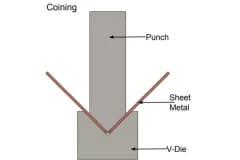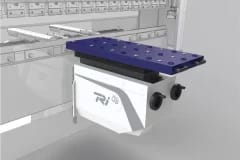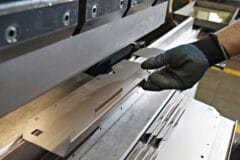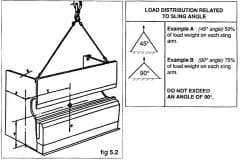Buying a press brake is a significant investment for a manufacturing or metalworking business. To ensure that you choose the right press brake for your specific needs, consider the following steps and factors:
1.Define Your Requirements:
Clearly define your manufacturing requirements. Understand the types of materials you’ll be working with, the thicknesses involved, and the sizes of the parts you’ll be producing. Consider the complexity of the bends you need and the production volume.
2.Type of Press Brake:
Choose between different types of press brakes, including mechanical, hydraulic, and hybrid models. Each type has its advantages and limitations. Hydraulic press brakes are popular for their versatility and ease of use.
3.Capacity and Size:
Determine the required bending capacity and size of the press brake based on the largest and thickest sheets you will be working with. Press brakes are available in various tonnages and bed lengths.
4.Tooling Options:
Consider the tooling options available for the press brake. Different tooling setups allow for various bending profiles. Ensure that the press brake can accommodate the tooling needed for your specific applications.
5.Backgauge and Control System:
Evaluate the backgauge system, which assists in positioning the sheet metal accurately. A CNC (computer numerical control) system provides precision control over the bending process. Consider the control features and ease of programming.
6.Flexibility and Versatility:
Assess the press brake’s flexibility to handle different bending tasks. Look for features that allow for quick tool changes, as well as the ability to handle a variety of materials and thicknesses.
7.Accuracy and Precision:
Check the accuracy and repeatability of the press brake. Modern CNC press brakes offer high precision, reducing the likelihood of errors and improving overall efficiency.
8.Manufacturer Reputation:
Research and choose a reputable press brake manufacturer. Consider factors such as the company’s experience, customer reviews, and the availability of customer support and service.
9.Budget Considerations:
Establish a budget for your press brake purchase. While it’s essential to stay within budget, prioritize features and capabilities that are crucial for your specific applications.
10.Safety Features:
Ensure that the press brake complies with safety standards and features necessary safety elements. This includes guarding, emergency stop systems, and safety interlocks.
11.Training and Support:
Inquire about the availability of training for your operators and maintenance staff. A manufacturer that provides comprehensive training and ongoing support can contribute to the efficient and safe operation of the press brake.
12.Warranty and Maintenance:
Review the warranty terms and inquire about the maintenance requirements. Understanding the warranty coverage and having a plan for regular maintenance can help ensure the longevity and reliability of the press brake.
13.Check for Used Options:
Consider whether a used press brake might be a suitable option. Used machines can provide cost savings, but it’s essential to thoroughly inspect the machine’s condition and history.
PRESS BRAKE DESIGNS AND STYLES
Press brakes come in various designs and styles to accommodate different manufacturing needs and preferences. The primary designs include mechanical press brakes, hydraulic press brakes, and hybrid press brakes. Additionally, there are variations in the frame style, such as the C-frame and the tandem press brake. Here’s an overview of these press brake designs and styles:
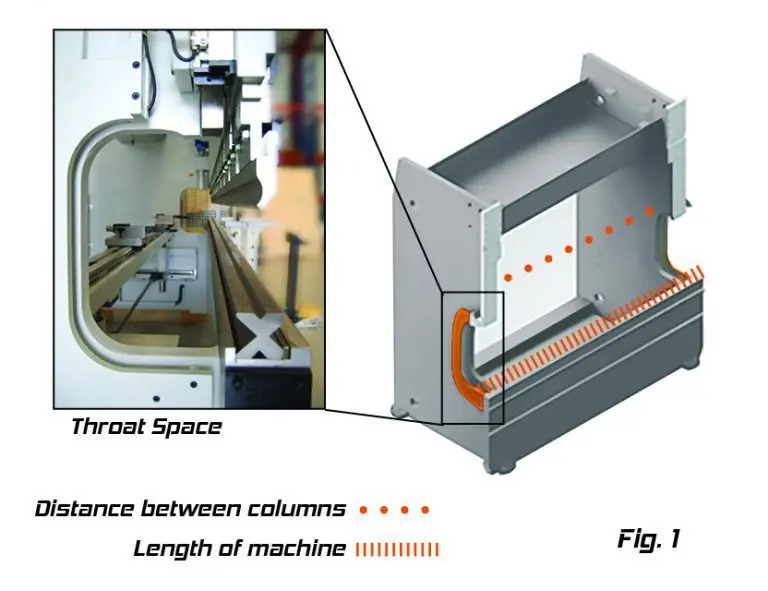
1.Mechanical Press Brakes:
Design: Mechanical press brakes use a mechanical flywheel to generate force for bending. The flywheel is engaged and disengaged using a clutch system, and the ram moves up and down mechanically.
Advantages:
Simple design.
Cost-effective for certain applications.
Suitable for lower production volumes.
Design: Hydraulic press brakes use hydraulic cylinders to apply force for bending. A hydraulic pump controls the movement of the ram. The hydraulic system provides flexibility and control over the bending process.
Advantages:
Versatile and suitable for a wide range of applications.
Precise control over bending parameters.
Higher production capabilities compared to mechanical press brakes.
Reduced noise levels during operation.
3.Hybrid Press Brakes:
Design: Hybrid press brakes combine elements of both mechanical and hydraulic systems. They typically use hydraulic power for high-speed bending and a mechanical drive for slower, high-force bending.
Advantages:
Improved energy efficiency.
Enhanced speed for certain operations.
Precision and control similar to hydraulic press brakes.
4.C-Frame Press Brakes:
Design: C-frame press brakes have a C-shaped frame, providing open access to the working area from three sides. They are suitable for smaller workpieces and simpler bending tasks.
Advantages:
Compact design.
Accessible from three sides, facilitating material handling.
Suitable for smaller workshops or applications with space constraints.
5.Tandem Press Brakes:
Design: Tandem press brakes consist of two or more press brakes working together in tandem. They can operate independently or in synchronization, allowing for the bending of longer and larger workpieces.
Advantages:
Increased bending length and capacity.
Suitable for large and heavy components.
Enhanced flexibility for different bending tasks.
Box and Pan Brake:
Design: Box and pan brakes are designed for bending sheet metal into boxes and pans with four sides. They often have adjustable fingers or dies to create specific shapes.
Advantages:
Ideal for forming boxes, trays, and other complex shapes.
Adjustable fingers provide flexibility in forming.
CNC (Computer Numerical Control) Press Brakes:
Design: CNC press brakes, available in mechanical, hydraulic, or hybrid designs, are equipped with computerized controls for precise programming and automation. CNC systems control the bending parameters, backgauges, and other features.
Advantages:
High precision and repeatability.
Efficient for complex and varied bending operations.
Increased productivity and reduced setup times.
When choosing a press brake design or style, consider factors such as the type of workpieces you’ll be producing, production volume, required precision, and available space in your workshop. Each design has its own set of advantages, and the choice depends on your specific manufacturing requirements.
PRESS BRAKE WIDTH
The width of a press brake, often referred to as the “bed” or “throat depth,” is a critical factor to consider when selecting a press brake for metal forming applications. The width of the press brake determines the maximum width of the sheet metal that can be accommodated for bending. Here’s a brief explanation:
1.Press Brake Width (Bed Size):
The width of a press brake is measured from the back of the machine (where the operator stands) to the centerline of the bend die or tooling. This measurement indicates the maximum distance from the backgauge to the front of the press brake.
2.Throat Depth:
The distance from the center of the tooling to the back frame of the press brake is known as the throat depth. It represents the maximum distance the edge of a workpiece can be bent into the machine. A larger throat depth allows for bending larger workpieces.
3.Considerations for Press Brake Width:
The width of the press brake should be chosen based on the maximum width of the sheet metal workpieces you plan to bend. It’s essential to select a press brake with a bed size that comfortably accommodates the size of your typical workpieces.
In addition to the bed size, consider the overall size of the machine and the available space in your workshop. Ensure that the press brake fits within your operational space while allowing convenient access for material handling and tool setup.
4.Types of Press Brake Width:
Press brakes are available in various bed sizes to cater to different applications. Smaller press brakes with narrower beds may be suitable for compact workshops or applications with limited space. Larger press brakes with wider beds are used for handling larger sheets and heavier workpieces.
5.Tandem Press Brakes:
Tandem press brakes, which consist of two or more press brakes working together, provide an extended bending length. In these setups, the combined width of the individual press brakes allows for the bending of longer workpieces.
Consideration for Tooling:
When selecting a press brake width, consider the tooling options available. The tooling should match the width of the press brake and be suitable for the desired bending tasks.
In summary, the press brake width is a critical specification to consider based on the size of the sheet metal workpieces you intend to bend. Ensure that the chosen press brake width aligns with your production requirements and the available space in your workshop.
BENDING POWER AS TONNAGE
Bending power in a press brake is often measured in tonnage, and it refers to the force or pressure applied by the machine to bend or shape the sheet metal. The tonnage of a press brake is a crucial factor in determining its capacity to handle different materials, thicknesses, and bending tasks. Here’s a closer look at bending power as tonnage in a press brake:
1.Definition of Tonnage:
Tonnage in the context of press brakes is the force exerted by the machine’s ram (the part that carries the upper tool or punch) onto the sheet metal. It is typically measured in tons. One ton of force is equivalent to applying 2,000 pounds of force.
2.Factors Affecting Tonnage Requirements:
The tonnage required for a specific bending operation depends on several factors, including:
Material type and its tensile strength.
Sheet thickness.
Bending length (the distance along which the bending force is applied).
Bend angle.
3.Calculating Required Tonnage:
Different materials and thicknesses have varying requirements for bending force. The required tonnage can be calculated using formulas that take into account material properties and bending parameters. The formula commonly used is:
Tonnage
=
Material Strength
×
Material Thickness
×
Bending Length
K-Factor
Tonnage=
K-Factor
Material Strength×Material Thickness×Bending Length
4.K-Factor:
The K-Factor is a factor that considers the material’s behavior during bending and accounts for factors like material elasticity and the radius of the bend. It is specific to the material and the bending process. The accurate determination of the K-Factor is crucial for precise tonnage calculations.
5.Choosing the Right Tonnage:
It’s essential to choose a press brake with adequate tonnage for the types of materials and thicknesses you will be working with. Selecting a press brake with insufficient tonnage can lead to difficulties in achieving the desired bends, while excess tonnage may be unnecessary and could increase costs.
6.Over-tonnaging and Under-tonnaging:
Over-tonnaging: Using a press brake with significantly higher tonnage than required can lead to increased energy consumption, wear on the machine, and higher initial costs.
Under-tonnaging: Using a press brake with insufficient tonnage may result in difficulty bending thicker materials or achieving accurate bends, impacting the overall quality of the fabricated parts.
7.Considerations for Tonnage:
When choosing a press brake, consider the range of tonnage it offers. Some press brakes are designed with adjustable tonnage settings, providing flexibility for a variety of applications. High-tonnage press brakes are suitable for heavy-duty bending tasks, while lower-tonnage machines are suitable for lighter applications.
Understanding the tonnage requirements for your specific bending tasks is crucial for selecting the right press brake that meets your production needs and ensures efficient and accurate metal forming operations.
HOW MANY AXES DO YOU NEED WHEN BUYING A PRESS BRAKE?
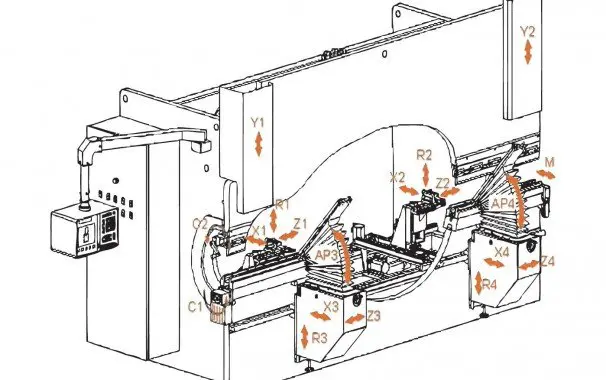
The most basic style of brake has only one axis control, the vertical, known as Y. It controls how deeply the ram pushes the top tooling into the bottom die. The KAAST HPA-P hydraulic workshop press brakes offer this single axis control, which is manually adjusted on the side of the machine column. The KAAST HPB CNC press brakes are available with up to 10 axis CNC control, see Fig. 4.
Back-Gauge
Adding a back-gauge when buying a press brake, controls the length of your bend leg or flange. The most basic back-gauges are manually adjusted while CNC back-gauges are powered and adjust according to the requirements determined by the bending program. How many axes you will need to control (and how they are adjusted) depends on the complexity of your desired final product and the skill of your operator. Control over the X axis (flat, horizontal), see Fig. 5, allows the operator to control the flange length. The operator setts the depth at which the material is inserted into the brake. This can also be split into X1 and X2. Allowing one end of the material to be inserted farther than the other resulting in an asymmetrical flange.
Control over the height of the back-gauge, is realized by adding an R axis control, see Fig. 6. This allows the backgauge to be aligned to the edge of the material for a second bend.
Z Axis Control
The amount of variation in your material width determines if you need Z axis control when buying a press brake. This would allow horizontal adjustment of the width between the touch points of the back-gauge, also known as the fingers. See Fig. 7. If bending one specific width of material, you probably don’t need powered Z axis control. If your material widths vary greatly, powering these fingers will greatly reduce operator set-up time.

